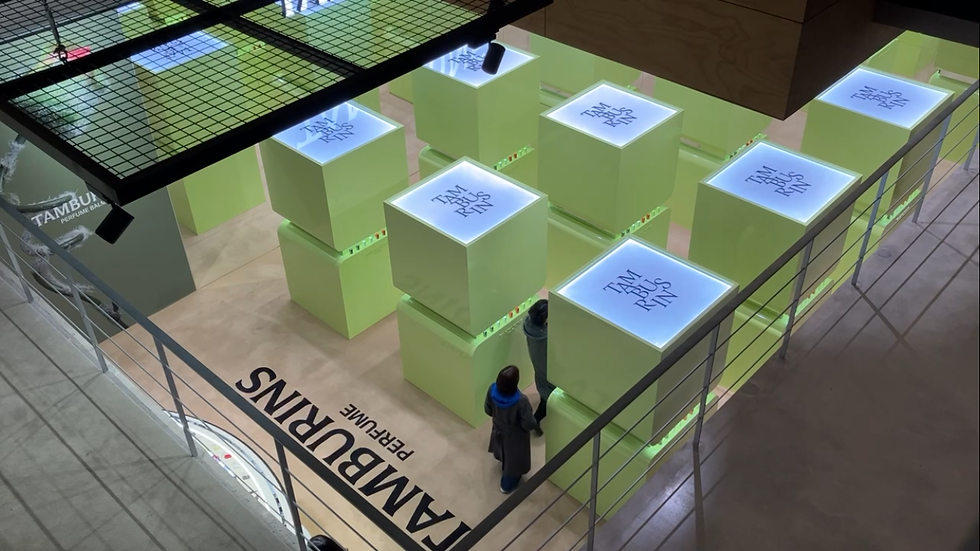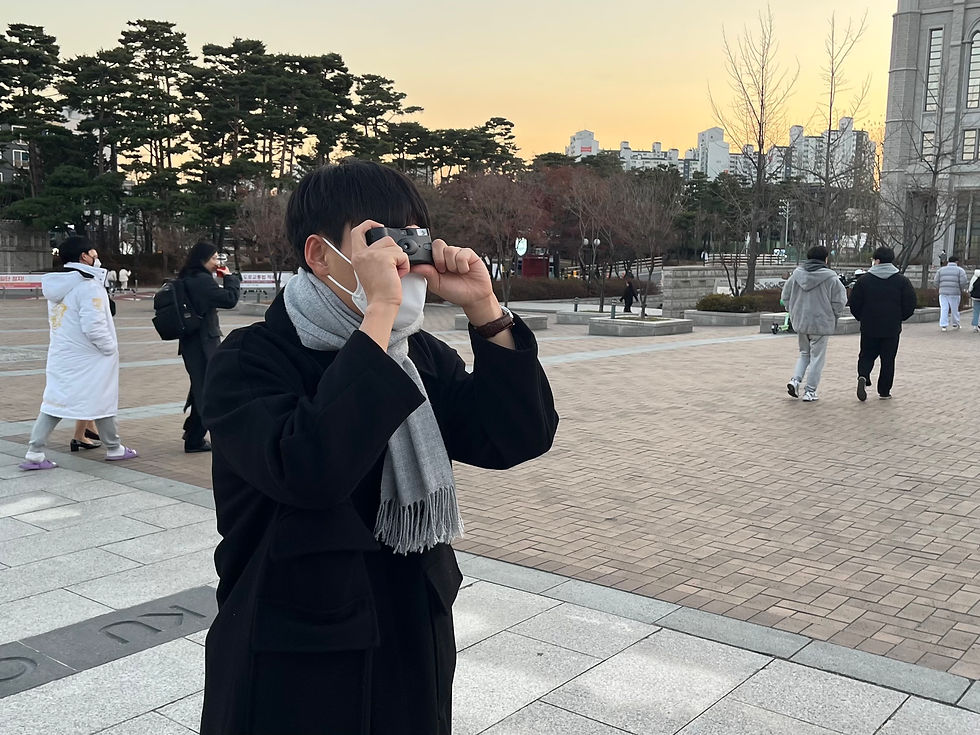The Trend of 'Concept space', Background and Prospects
- 한나 이
- Dec 19, 2022
- 5 min read
December 19, 2022
Hyoji Shin, Hanna Lee

Figure of the fashion brand ADERERROR
SEOUL - Room with meteor-like sculptures and craters everywhere, a structure depicting an astronaut attempting to dock, a metal spaceship spewing water, and a fitting room that looks like a view of the universe. This space, which can be trusted even if it is an exhibition hall, is Arthur Space 2.0, a flagship store of the fashion brand Arthur.
As such, an offline space that provides consumers with a different experience beyond simply selling goods is called a 'concept space'. It is relatively recent that such a complex cultural space has begun to attract attention in earnest, but it has been a while since a 'space with a concept' that provides a different experience appeared. In the fashion and cosmetics sectors, where brand image is important due to its characteristics, stores have been created that utilize the brand's 'concept' a long time ago. In the case of Korea, beauty brands grew in large numbers between 2008 and 2010, and concept stores emerged in earnest, leading these stores.
Due to the influence of the Corona period that began a few years ago, offline spaces had to find new incentives to attract consumers, and conceptual spaces became a good solution to meet this need. This resulted in the expansion of the scope of the introduction of concept space.

Customers inside the room of Lazy Farmers named ‘Library’.

Interior of the Lazy farmers café
Lazy Farmers, a café and restaurant in Itaewon, has the concept of Namsan University's Department of Botany. All spaces in the restaurant have the concept of the school, such as "library" and "lecture room," and when customers visit the store, they become college freshmen and listen to the explanations of employees who are seniors in the school. In addition, conceptual spaces in various fields, including sunglasses stores where huge robots move and ballpoint pen stores that also serve as exhibition halls, are leading the trend today and gaining huge popularity among people.

Shell-shaped objects and Shell Hand cream of Tamburines on stand

Various objects inside Tamburines
The rapid growth of offline conceptual spaces was largely affected by Corona. Specifically, the growth of the online market due to COVID-19 had a great impact. According to Professor Lee Ra-Kyung of the Department of Distribution Management, today's 'online penetration rate' is close to 50%. However, despite the development of the online market, which has strong advantages such as low prices, convenience, and good accessibility, the influence of offline space continues to grow.
This was possible because 'experience' became an important keyword for both consumers and companies. Based on the numerous information that can be found with a little Internet search, consumers' tastes have been subdivided more than ever before, and they need space to experience it concretely and physically. In addition, companies strongly felt the need to deliver their own brand value amid the saturation of similar competitors. Together, these two positions have led to the emergence of a concept-type space that provides a differentiated "experience" beyond simply purchasing goods offline.

Monami Store gives more experience to visitors, not only showing their products.
Companies can not only make profits by selling products, but also deliver the value of their brand through five senses in the concept spaces. This is the strength of the concept-type space that cannot be done in online stores. The reason why companies focus on the concept space putting higher cost than online stores is that they can strongly recognize their brand to consumers through it.
"The primary goal of all marketing is to raise awareness of the brand, which means making consumers remember and recognize their brand. Through this experiential concept space, companies can make the effect of strongly recognizing the brand to consumers' mind.", from professor Ra-kyung Lee. Companies can establish a unique and positive perception of the brand while providing memorable experiences to consumers, rather than simply selling products in a conceptual space.

Tamburins structure in Haus Dosan first floor

A number of posts of Tamburines structure on Instagram
In particular, the MZ generation is the main consumer of concept spaces. The reason why the MZ generation becomes enthusiastic about concept spaces is related to changes in consumption patterns according to the times. Since offline space was the only means of consumption for Generation X and Baby Boomers in their 20s and 30s, they had many opportunities to experience the brand directly at offline stores and establish their own tastes.
However, the MZ generation had a dark period due to Covid-19 when they were in the midst of consumption. The information and consumption options available are getting wider, but the opportunity to access them is limited online, making it difficult to establish one's consumption taste. Therefore, there is a strong tendency among the MZ generation to pursue physical and tangible experiences, which led to enthusiasm for offline space. In addition, the MZ generation has a tendency to dig deep into their tastes, search for information, and carefully examine the value of the brand as well as the price and quality of the product.
In other words, they commonly have the idea that 'My taste tells me and what I buy tells me.' Professor Ra-kyung Lee said, "The MZ generation shares something on Social media when they judge that where I go, what I eat and what I do reveals my identity. In that sense, the concept space is a place where individual tastes can be well revealed, and by visiting the space, they can see what this brand is pursuing and whether its value fits them."
The biggest disadvantage of concept space for companies is that the initial cost is very high compared to online stores or general offline commercial spaces. In particular, it is often burdensome for startups or small companies to operate a concept space with their capital. If space is successful, companies can continue the effect of raising awareness and generate profits, but if they do not succeed with a huge initial cost, the cost to endure is also enormous. In addition, as the company's limited capital is invested in space, the quality of the product often decreases.
Chang Yoon Jung warned about this case, saying "As a result, what people use is a product. After all, if the quality is bad, people don't revisit. I'd like to tell that companies have to be careful about that." In addition, it is true that concept spaces should reflect trends, but they often plan spaces that are far from the essence of the company, only focusing on following trends. Also, professor Ra-kyung Lee emphasized that it is important to link the values that companies essentially pursue with the trend in harmony, and if they do not, it could instill a negative perception of the brand to consumers.

Interior of Knotted Peaches, which is a collaborative space of various brands
CEOs of companies and management experts predict that the trend of pursuing this concept space will inevitably continue. This is because in a world where online and offline coexist, consumers continue to want concrete and tangible experiences. However, they emphasize that convergence of various industries is necessary in order for the domestic concept space to develop. "There are many large-scale concept spaces created by various companies in cooperation with each other overseas. However, Korea has such a fierce competition that there is a limit to not maintaining such collaboration in the long term. Therefore, I think the most desirable direction for development of concept space is overall and long-term collaboration in various industries such as planning, development, real estate, and local government.", Chang Yoon Jung said.



Comments